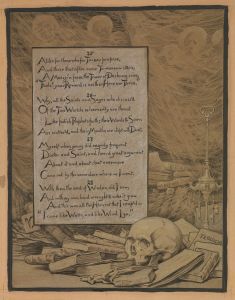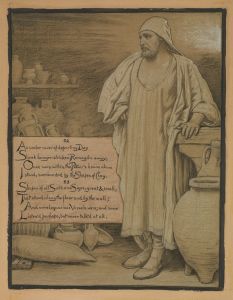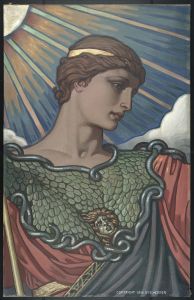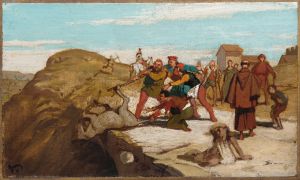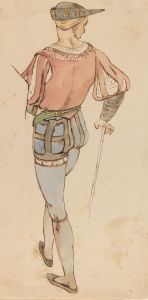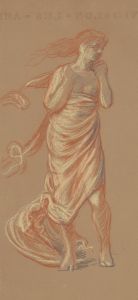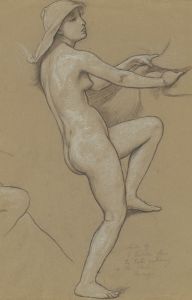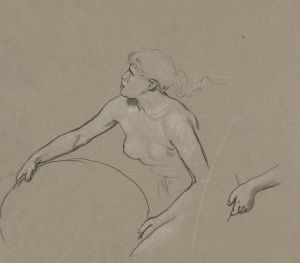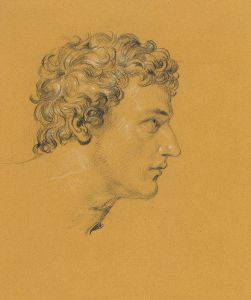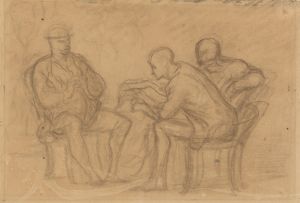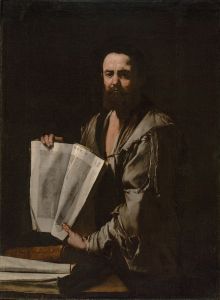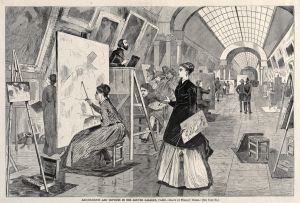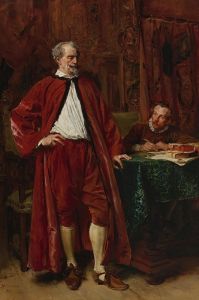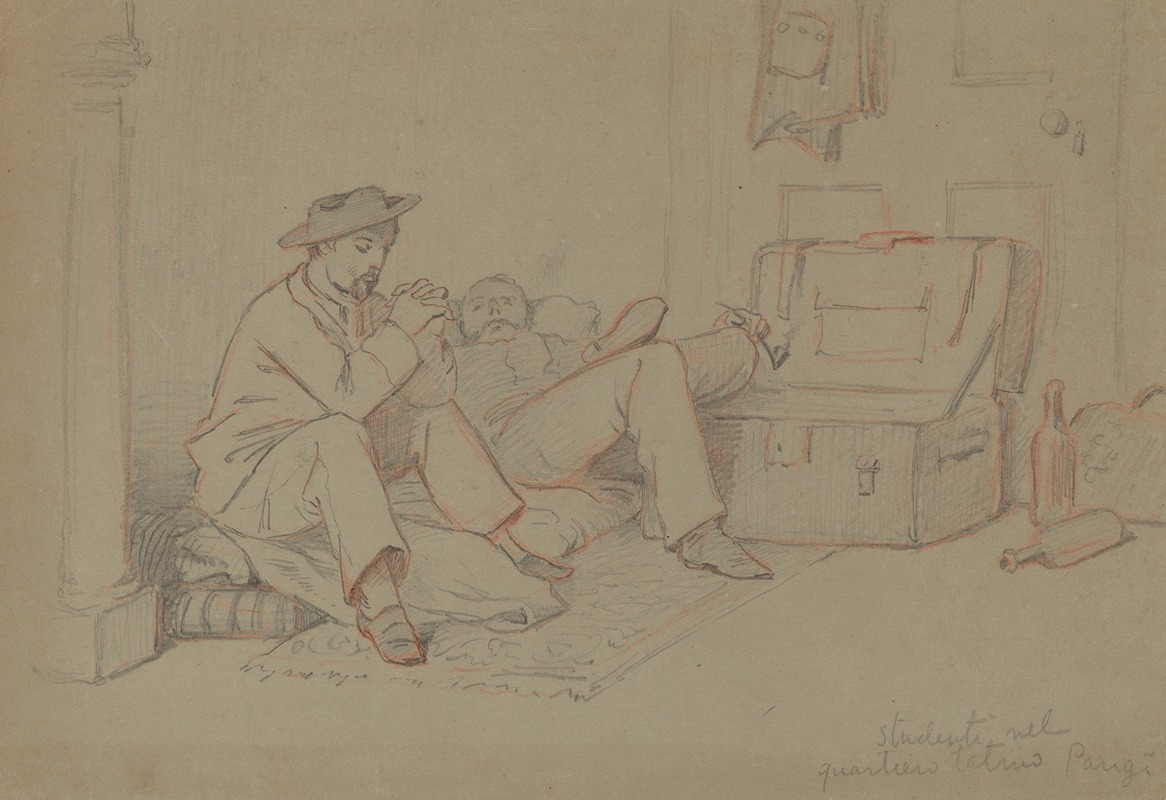
Students in the Latin Quarter, Paris
A hand-painted replica of Elihu Vedder’s masterpiece Students in the Latin Quarter, Paris, meticulously crafted by professional artists to capture the true essence of the original. Each piece is created with museum-quality canvas and rare mineral pigments, carefully painted by experienced artists with delicate brushstrokes and rich, layered colors to perfectly recreate the texture of the original artwork. Unlike machine-printed reproductions, this hand-painted version brings the painting to life, infused with the artist’s emotions and skill in every stroke. Whether for personal collection or home decoration, it instantly elevates the artistic atmosphere of any space.
"Students in the Latin Quarter, Paris" is a painting by the American artist Elihu Vedder, created in the late 19th century. Elihu Vedder, born in 1836, was an American symbolist painter, illustrator, and writer, known for his mystical and allegorical works. He spent a significant portion of his career in Europe, particularly in Italy, but also spent time in Paris, where he was influenced by the vibrant artistic community.
The Latin Quarter in Paris, where the painting is set, has historically been a hub for artists, intellectuals, and students. It is located on the left bank of the Seine River and is known for its bohemian atmosphere, educational institutions, and cultural significance. During the 19th century, the Latin Quarter was a gathering place for many artists and writers, making it a fitting subject for Vedder's work.
"Students in the Latin Quarter, Paris" captures the essence of this lively and intellectual environment. Although specific details about the painting's composition and style are limited, Vedder's work often reflects his interest in symbolism and allegory. His paintings frequently explore themes of human experience, spirituality, and the passage of time, which may also be present in this work.
Vedder's time in Paris exposed him to various artistic movements and styles, including Impressionism and Symbolism, which were prominent during the period. While Vedder is not typically classified as an Impressionist, his exposure to these movements likely influenced his approach to painting and his choice of subjects.
The painting is part of Vedder's broader body of work, which includes illustrations for literary works, such as his famous illustrations for Edward FitzGerald's translation of "The Rubaiyat of Omar Khayyam." Vedder's ability to convey complex ideas through visual art is evident in his diverse portfolio, which spans various themes and styles.
Elihu Vedder's contributions to art extend beyond his paintings. He was also a writer and poet, and his artistic philosophy often intertwined with his literary pursuits. His works are characterized by a deep exploration of philosophical and existential themes, reflecting his interest in the human condition and the mysteries of life.
While "Students in the Latin Quarter, Paris" may not be as widely recognized as some of Vedder's other works, it remains a testament to his engagement with the cultural and intellectual currents of his time. The painting serves as a window into the vibrant world of the Latin Quarter and the artistic milieu that Vedder was a part of during his time in Paris.
Overall, Elihu Vedder's "Students in the Latin Quarter, Paris" is a reflection of the artist's experiences and influences during his time in one of the most culturally rich areas of Paris. It captures the spirit of an era when the Latin Quarter was a center of artistic and intellectual activity, offering a glimpse into the world that inspired Vedder and many of his contemporaries.





